Can Dogs See TV?
Dogs and television – it’s a curious combination that raises the question: Can dogs actually see TV? This topic has sparked much interest among pet owners and dog lovers alike. Let’s explore the fascinating world of dogs and TV through various scientific explanations, observations, and insights.
Scientific studies have shown that dogs can indeed see TV screens, but their viewing experience differs from that of humans. Dogs’ visual perception is different from ours, as their eyesight is more sensitive to motion and certain colors. This sensitivity is due to the distribution of rod and cone cells in their eyes, which are responsible for detecting light and color. However, dogs have fewer cone cells and see less detail compared to humans, which means they perceive TV images differently.
When dogs watch TV, their reactions can vary. Some dogs may show great interest, while others may not pay much attention to the screen. The type of content on TV can play a significant role in capturing a dog’s attention. Dogs are more likely to react to shows or videos with fast-paced motion, vivid colors, or animal sounds. Common reactions include barking or whining at animals on-screen, tilting their heads in curiosity, or even attempting to interact with the TV.
While dogs can see TV and react to it, the question remains – can they actually benefit from watching it? Some experts believe that, under certain circumstances, TV can help dogs. For instance, it may be used as a tool to provide mental stimulation for dogs who are left alone for extended periods. It can provide a source of visual and auditory stimulation, potentially reducing boredom and anxiety. However, it should be noted that the effectiveness of TV as a means of stimulation or anxiety reduction can vary depending on the individual dog.
To help your dog enjoy TV, it’s recommended to choose content specifically designed for dogs, such as nature shows featuring animals or videos with sounds that dogs find appealing. You can also enhance their viewing experience by creating a comfortable and safe environment near the TV, using positive reinforcement techniques, and providing interactive toys or treats during TV time.
While dogs watching TV can be entertaining and occasionally beneficial, it’s important to be aware of potential side effects. Excessive screen time can lead to overstimulation or frustration in some dogs, and it’s essential to monitor their behavior and reactions. It’s always best to consult with a veterinarian or professional dog trainer if you have concerns about your dog’s TV viewing habits.
Key takeaways:
- Dogs can see TV: Dogs can see TV screens, but their visual perception differs from humans. They primarily rely on motion and certain colors.
- Dogs react to certain TV content: Dogs are more likely to react to TV shows or videos that feature animals, other dogs, or fast-moving images. The level of reaction varies by individual.
- TV can benefit dogs: TV can potentially help in reducing dog anxiety by providing a distraction and stimulating mental stimulation. However, it’s not a substitute for real-life interactions and physical exercise.
Can Dogs See TV?

Photo Credits: Petnarnia.Com by Harold Mitchell
Can Dogs See TV?
Dogs can see television, but their experience differs from ours. Due to differences in visual perception, dogs perceive the images on TV differently than humans. Dogs are more responsive to movement on the screen, such as animals or quick actions. Most dogs may not be interested in TV unless something is stimulating to them. Some dogs may even become agitated or confused by the sounds and images on the screen. It is important to note that individual dogs may have varying reactions to TV, so it is always best to observe your own dog’s behavior and preferences when it comes to watching TV.
Do Dogs Watch TV Like Humans?
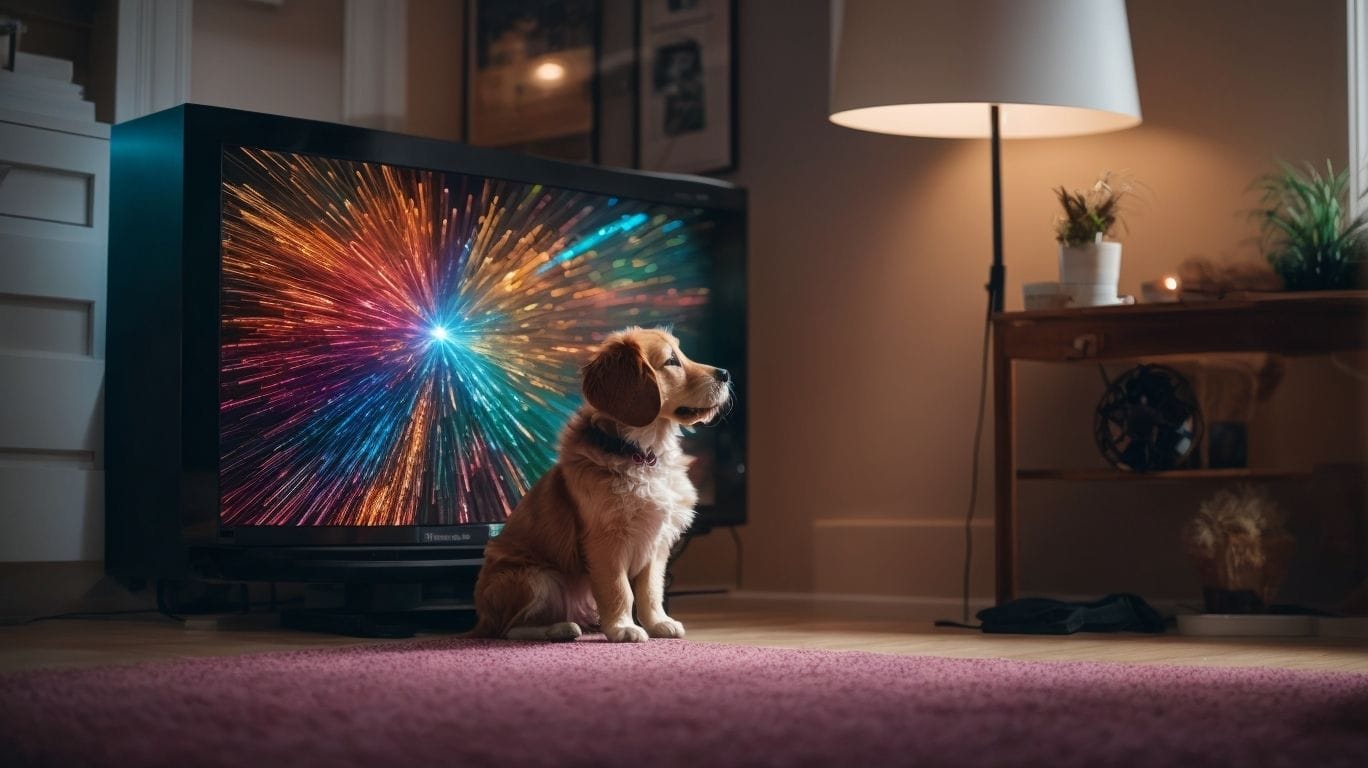
Photo Credits: Petnarnia.Com by John Scott
Dogs may watch TV, but their viewing experience differs from that of humans. While canines are capable of seeing TV screens, their vision is distinct. Dogs have fewer color receptors compared to humans, resulting in a less vibrant image. Additionally, dogs possess a heightened ability to perceive flickering, which means they might perceive the TV as a series of still images. Notwithstanding these disparities, certain dogs do exhibit interest in specific TV shows, particularly those featuring animal sounds or movements. Therefore, while dogs may not engage in TV-watching in the same manner as humans, they can still find entertainment value in certain programs.
What Is the Scientific Explanation Behind Dogs Watching TV?
Contrary to popular belief, dogs can see TV, but their visual experience differs from humans due to differences in visual acuity and color perception. What Is the Scientific Explanation Behind Dogs Watching TV? The scientific explanation behind dogs watching TV lies in their ability to perceive motion on the screen and their instinctual response to certain visual stimuli. Dogs’ visual system is highly sensitive to movement, making them attracted to programs or videos with quick motion. While they may not interpret every detail on the screen, dogs can still enjoy TV as a form of entertainment and stimulation. It is essential to remember that dogs’ primary sources of mental stimulation should come from outdoor play, interactive toys, and human interaction.
How Do Dogs React to TV?
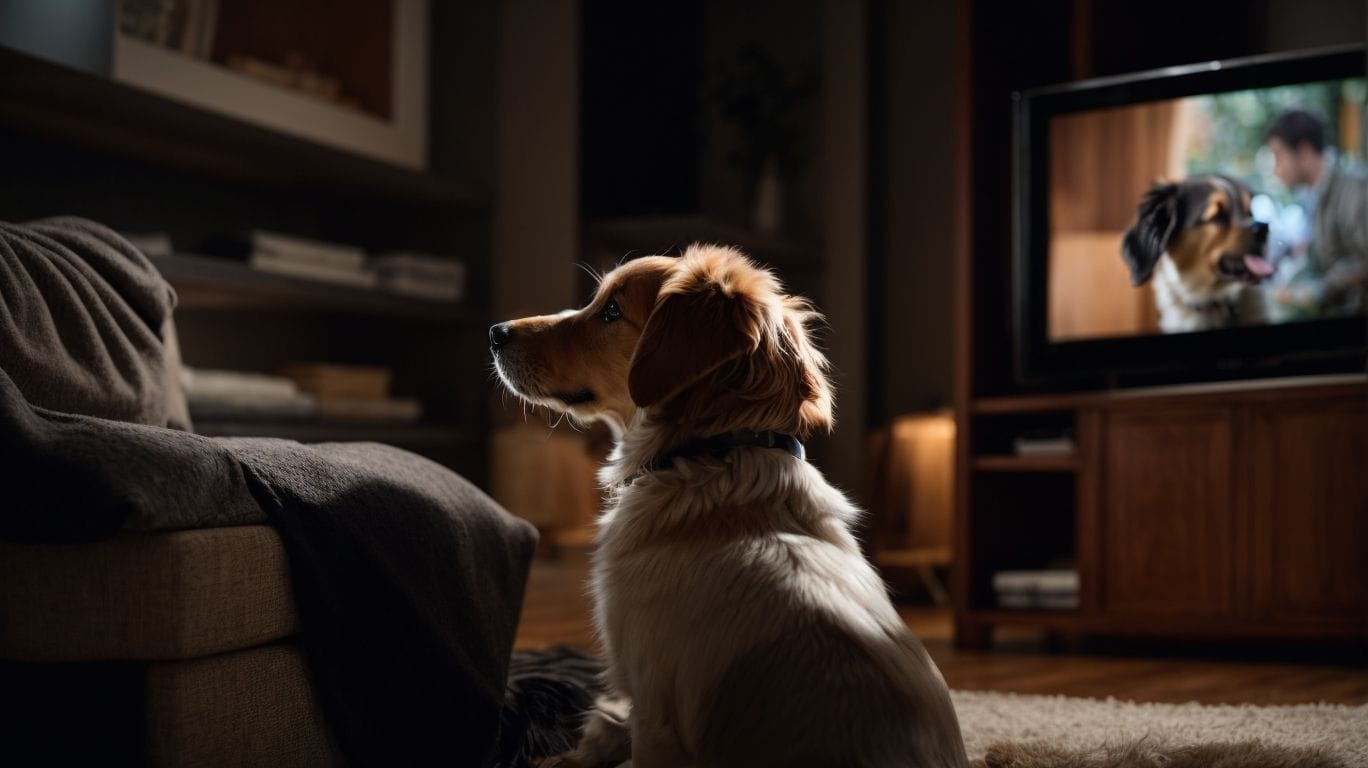
Photo Credits: Petnarnia.Com by Bruce Wilson
How Do Dogs React to TV?
Dogs have varying reactions to television, depending on their personalities. Some dogs may show interest and engage with the images by barking, wagging their tails, or even trying to interact with the screen. Others may not pay much attention to the TV at all. Factors that influence a dog’s reaction include the content on the screen, sound effects, and the dog’s previous experiences with television. Owners need to observe their dogs‘ behavior and ensure that watching TV doesn’t cause any anxiety or stress for their furry friends.
Which Types of TV Content Do Dogs React To?
Which types of TV content do dogs react to? Dogs can react to various types of TV content, depending on their individual preferences and instincts. Here are some types of TV content that dogs commonly react to:
- Nature shows: Dogs may be fascinated by images of animals in their natural habitats, such as wildlife or nature documentaries.
- Animal-related shows: Dogs might react to TV shows or commercials featuring other animals, such as dogs, cats, or birds.
- Motion-filled content: Dogs are often attracted to TV shows with a lot of movement, such as sports or action-packed movies.
- Audio cues: Dogs may react to specific sounds or voices, such as dogs barking or commands given in commercials or TV shows.
- Visual stimuli: Some dogs might respond to fast-paced visuals, bright colors, or high-contrast images on the screen.
What Are Some Common Reactions of Dogs to TV?
When dogs watch TV, their reactions can vary. What Are Some Common Reactions of Dogs to TV? Some common reactions include barking at animals or sounds on the screen, trying to play with moving images, or simply ignoring the TV altogether. This is because dogs perceive motion on screens differently than humans do. Some dogs may become more alert or excited when watching nature shows, while others may be fascinated by fast-moving sports or action sequences. It’s important to note that not all dogs are interested in TV, and each dog’s reaction can be unique.
I once had a dog named Max who would always tilt his head and wag his tail whenever he saw a dog on the TV screen. He would even bark and jump up, trying to get closer to the “new friend.” It was adorable to see his enthusiastic reactions, and it always brought a smile to our faces.
Can Dogs Benefit from Watching TV?
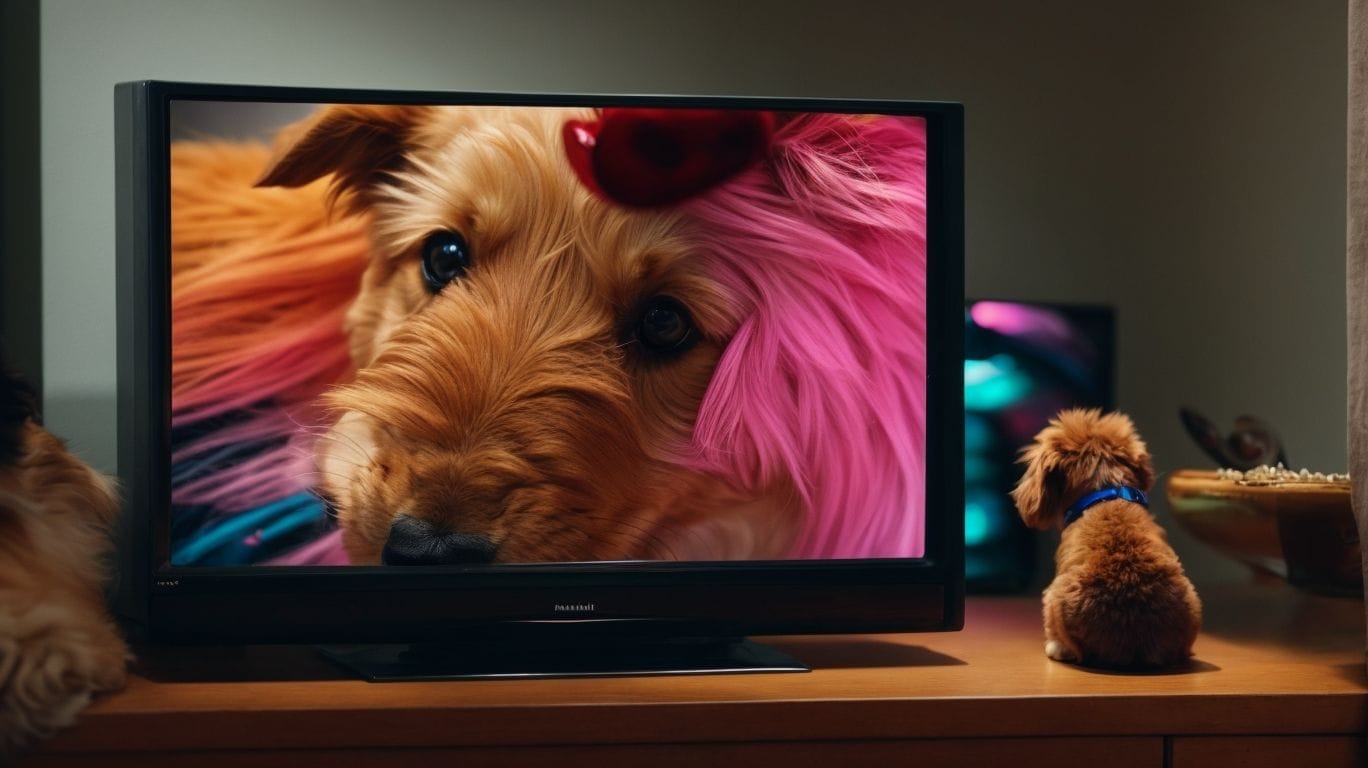
Photo Credits: Petnarnia.Com by Bobby Harris
Can Dogs Benefit from Watching TV?
Watching television can be just as beneficial for dogs as it is for humans. Similar to us, dogs can find entertainment and stimulation by tuning in to their favorite shows. There are several ways in which dogs can benefit from watching TV:
1. Relaxation: Dogs can experience a sense of calm through watching calming nature scenes or listening to soothing music on TV. These calming visuals and sounds can help reduce anxiety in dogs and promote relaxation.
2. Enrichment: Specifically designed shows for dogs featuring animal sounds and movements can provide mental stimulation and prevent boredom. These shows are tailored to cater to a dog’s interests, keeping their minds active and engaged.
3. Bonding: Watching TV together can be a shared activity that helps strengthen the bond between dogs and their owners. This time spent together, enjoying a show or movie, can create a sense of companionship and enhance the emotional connection between them.
4. Educational: Dogs can even learn from TV shows! Some programs teach basic obedience commands or demonstrate problem-solving skills, allowing dogs to pick up on these cues and learn new skills. By watching these educational shows, dogs can further develop their intelligence and understanding.
Can TV Help With Dog Anxiety?
Television can be a helpful tool in addressing dog anxiety. Can TV help with dog anxiety? When dogs watch TV, it can distract them from their anxious feelings and provide mental stimulation. To make it effective, select content that is calming, such as nature shows or “dog-specific” channels that feature dogs and dog-friendly commands. Ensure a comfortable viewing experience with clear audio and high-resolution pictures. Can TV help with dog anxiety? It’s important to note that not all dogs will respond positively to TV, and some may become more anxious or agitated. Always consult with a trained professional to address your dog’s specific needs. Pro-tip: Pair TV time with other anxiety-reducing activities like outdoor play or interactive toys. Can TV help with dog anxiety?
Can TV Provide Mental Stimulation for Dogs?
Can TV provide mental stimulation for dogs? TV can indeed provide mental stimulation for dogs, helping to alleviate boredom and provide entertainment.
- Interactive Shows: Certain shows or videos designed specifically for dogs can engage their attention and stimulate their minds.
- Nature Documentaries: Dogs might enjoy watching nature shows featuring animals such as birds or squirrels, which can pique their curiosity and engage their hunting instincts.
- Motion and Sound: Dogs are naturally attracted to movement and sound on the screen, making action-packed shows or sports events a source of mental stimulation.
- Dog Training Programs: Watching training videos can help dogs learn new commands or behaviors, providing mental challenges and rewards for their efforts.
Fact: Research has shown that dogs have dichromatic vision, meaning they perceive fewer colors than humans. They are more sensitive to movement and can detect subtle changes on the screen.
How Can You Help Your Dog Enjoy TV?
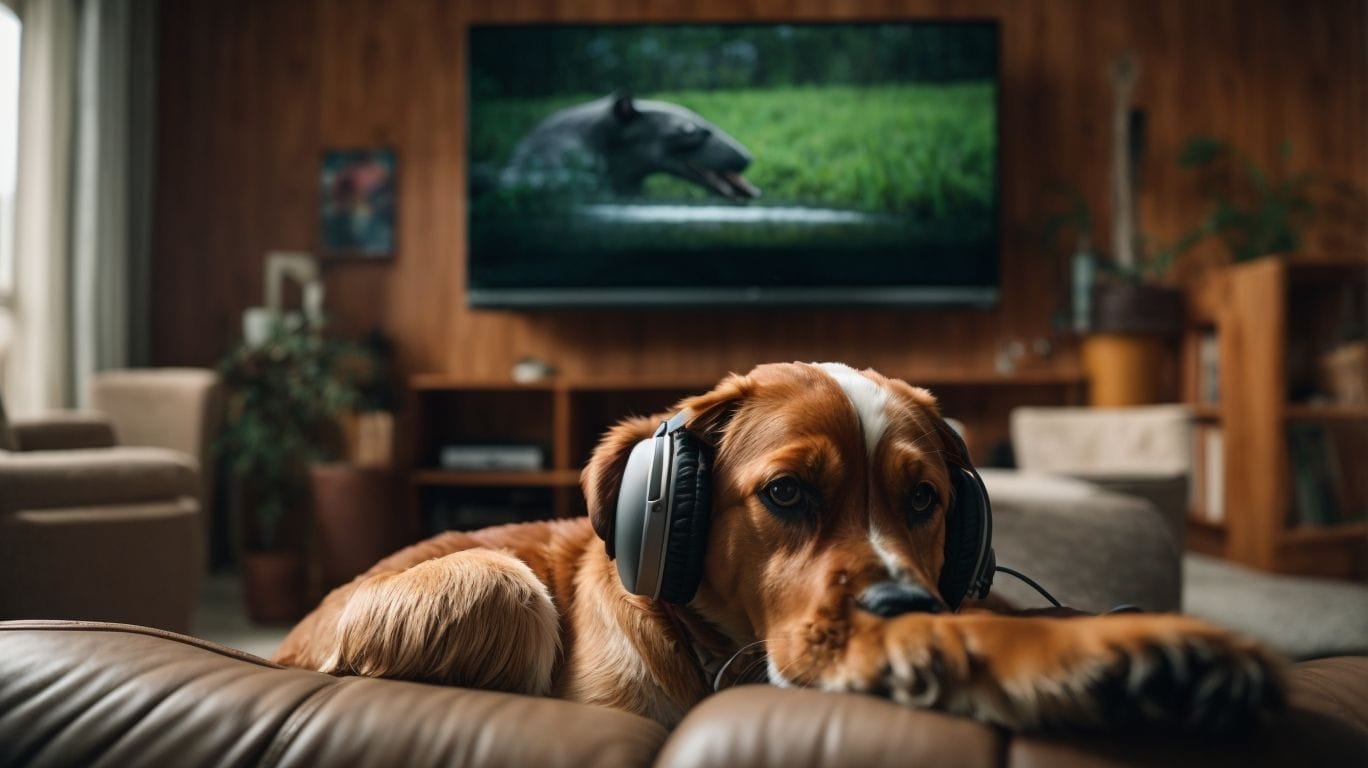
Photo Credits: Petnarnia.Com by Jacob Thomas
To help your dog enjoy TV, here are some steps you can follow:
- Choose dog-friendly content: How can you help your dog enjoy TV? Look for shows or videos specifically made for dogs with animal sounds and movements.
- Position the TV at eye level: How can you help your dog enjoy TV? Make sure your dog can see the screen comfortably without straining their neck.
- Create a cozy viewing spot: How can you help your dog enjoy TV? Set up a comfortable area near the TV with a soft bed or blankets.
- Engage with your dog: How can you help your dog enjoy TV? Sit with your dog during TV time and interact with them, making it a positive and bonding experience.
Pro-tip: How can you help your dog enjoy TV? Reward your dog with a treat or praise when they show interest in the TV, reinforcing their positive association with watching.
What Types of TV Programs or Videos Are Recommended for Dogs?
- What Types of TV Programs or Videos Are Recommended for Dogs? Dogs are often captivated by nature shows that feature animals in their natural habitats. The sights and sounds of wildlife can stimulate their instincts and provide entertainment.
- What Types of TV Programs or Videos Are Recommended for Dogs? Dogs may enjoy shows or videos with calm and steady movements, as fast-paced action can be confusing or overwhelming.
- What Types of TV Programs or Videos Are Recommended for Dogs? Some broadcasters and streaming platforms offer dedicated channels or videos designed specifically for dogs, featuring visuals and sounds that are appealing to them.
- What Types of TV Programs or Videos Are Recommended for Dogs? Programs with clear audio, such as dogs barking or toys squeaking, can catch a dog’s attention and elicit engaging responses.
- What Types of TV Programs or Videos Are Recommended for Dogs? Certain programs or videos encourage dogs to interact with the screen, such as virtual fetch games or commands that voice-activated systems can recognize.
- What Types of TV Programs or Videos Are Recommended for Dogs? Dogs perceive fewer colors than humans, so videos with high color contrasts, like those found in Animal Planet documentaries, can be visually engaging for them.
What Can You Do to Enhance Your Dog’s TV Viewing Experience?
What Can You Do to Enhance Your Dog’s TV Viewing Experience?
To enhance your dog’s TV viewing experience, here are a few things you can try:
Choose appropriate content: Select shows or videos specifically designed for dogs, featuring sights and sounds that appeal to them, such as nature shows or programs with animals.
Create a comfortable environment: Provide a cozy space for your dog to relax while watching TV, with a soft bed or blanket and their favorite toys nearby.
Adjust the settings: Increase the volume to a level that your dog finds comfortable. Also, consider using high-definition or 4K TVs, as dogs are sensitive to movement and may respond better to clearer visuals.
Interact with your dog: Engage with your dog during TV time by talking to them, using dog-friendly commands, or even playing with them using interactive toys.
Use positive reinforcement: Reward your dog with treats or praise when they exhibit calm behavior while watching TV, helping them associate the experience with positive outcomes.
Are There Any Potential Side Effects of Dogs Watching TV?
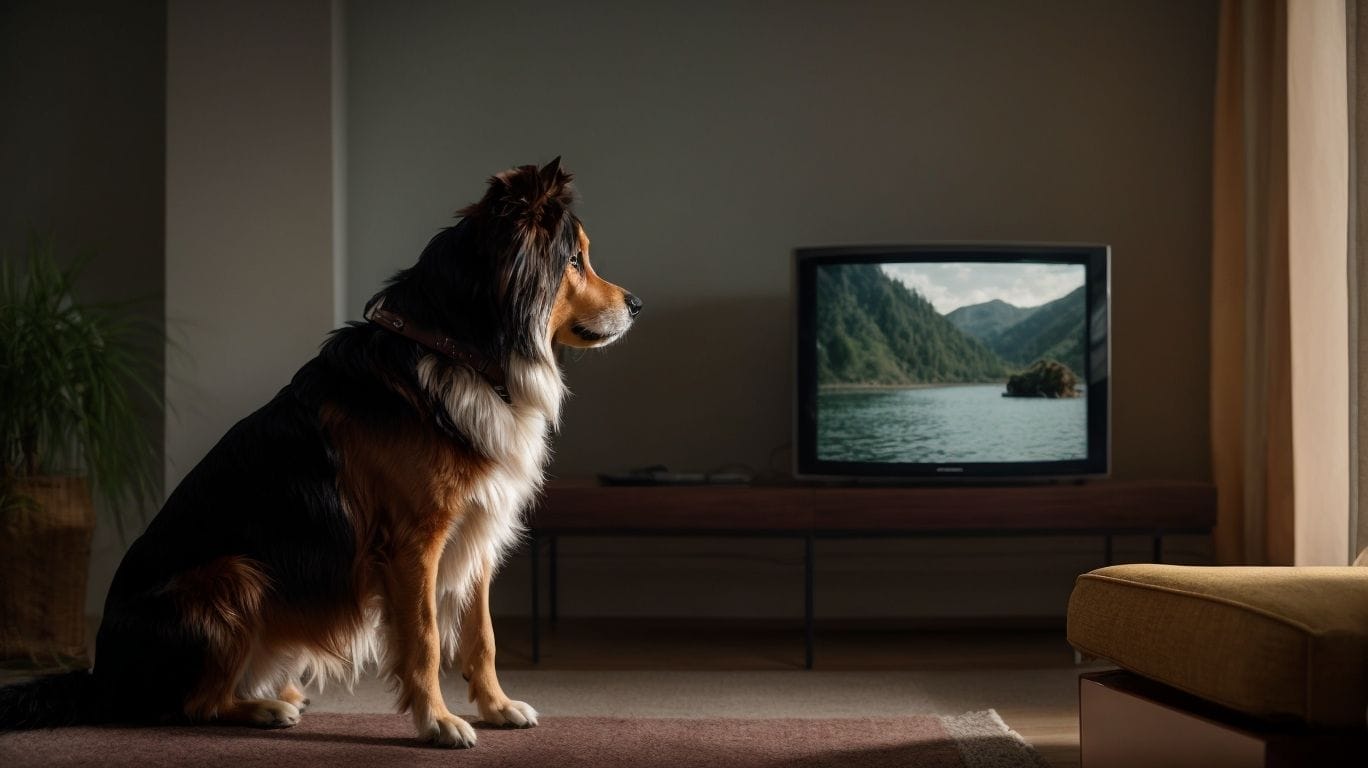
Photo Credits: Petnarnia.Com by Jose Ramirez
Are There Any Potential Side Effects of Dogs Watching TV?
Some potential side effects of dogs watching TV include:
- Overstimulation: Dogs may become overly excited or agitated while watching fast-paced or intense programming.
- Anxiety: Certain sounds or visuals on TV may trigger anxiety or fear in dogs, leading to restlessness or stress.
- Reduced physical activity: Dogs that spend too much time watching TV may become less active, leading to weight gain or decreased fitness levels.
- Eyestrain: Continuous exposure to bright screens can strain a dog’s eyes, potentially leading to discomfort or eye issues.
Fact: Dogs have poor depth perception, so they may struggle to distinguish between objects on a flat screen.
Some Facts About Can Dogs See TV:
- ✅ Dogs can watch TV and show interest in nature shows featuring real animals, but not cartoon critters. (Source: Hill’s Pet)
- ✅ Dogs need to be close to the TV screen to see it clearly, and the farther they are, the grainier and fuzzier the video appears. (Source: Hill’s Pet)
- ✅ Dogs perceive fewer colors with less saturation than humans, with a color range including dull blue, yellow, and green tones. (Source: Hill’s Pet)
- ✅ Dogs respond to specific colors, sounds, and movement on screens and enjoy TV entertainment, but it should not replace outdoor play and exercise. (Source: Hill’s Pet)
- ✅ Leaving a TV on while away can stimulate a dog’s mind, helping them ward off boredom and separation anxiety. (Source: Hill’s Pet)


